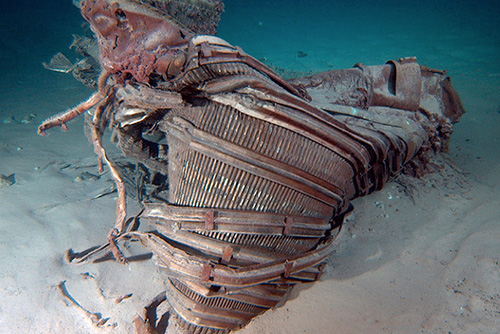Evaluation of Saturn V F-1 Engine Characteristics
Did the Saturn V F-1 rocket engines correspond to NASA’s published data? – and were there fundamental design flaws in the F-1 engine?
Extensive analysis of the available data on the Saturn V – and its engines in particular – has revealed that with high probability, NASA’s published characteristics were substantially overstated.
This article focuses on the the F-1 engine used in first stage of the Saturn V. According to the investigation conducted by the Gennady Ivchenkov, PhD, this engine had fundamental design flaws.
This research indicates that these engines could only lift off the pad a modified version of the Saturn V – just 2000 tons instead of the stated 2,800 tons.
For example, the F-1 tubular combustion chamber and nozzle were unable to provide the specified pressure and engine thrust. Furthermore, calculation of heat transfer and the stress applied to tube wall material reveals that:
- The tube material (Inconel X-750) was unable to withstand the load applied to the tubes of the cooling jacket;
- The tube material had problems with uncontrolled restructuring during thermal impact and with the chemical reaction of sulphur from kerosene RP-1 with nickel;
- The tube material had never before been used in high-temperature parts of rocket engines, although it could have been used in the upgraded H-1 (an engine also manufactured by Rocketdyne);
- The gas injection for cooling into the supersonic section of the nozzle caused shock waves in the injection area, narrowing the cross section of the supersonic flow and rendering pointless the profiling of the nozzle extension beyond the place of injection;
- The F-1 nozzle cited in all NASA documentation appears to differ from the actual design of the nozzle of the F-1 engine located during a Jeff Bezos’ Expedition in 2013. Part of the nozzle can be seen in a photograph of the F-1 found on the ocean floor.
Consequently, the pressure in the F-1 combustion chamber is likely to have been significantly lower than stated, due to fundamental shortcomings in the tubular cooling system of F-1 engines.
The launch weight of the Apollo Saturn V is found to be considerably lower than stated by NASA and, accordingly, could not ensure the accomplishment of the Apollo Moon program.
All modern rocket engines, without exception, including post-Saturn American engines, use Soviet/Russian technology. 'Tubular' American engines have now been dumped into landfill, have ended up in museums, or occasionally fly in old rockets, such as the US Delta II or the Japanese H-1.
Gennady Ivchenkov, PhD
Aulis Online, November 2013
![]() Read the full paper by Gennady Ivchenkov Ph.D here
Read the full paper by Gennady Ivchenkov Ph.D here
About the Author
Gennady Ivchenkov graduated from the faculty Power Engineering of the Bauman Moscow State Technical University (Bauman MSTU) in 1974, majoring in Aircraft engines (Rocket Engines Department) (3rd specialization – solid propellant rocket motors; 1st specialization – LRE (liquid rocket engines)).
In 1980 he defended his thesis for the degree of Candidate of Technical Sciences (Ph.D.). The topic of the thesis is a study of combustion in high-speed gas flow. He worked as a researcher at NIIGRAFIT company (research of ablation of carbon-carbon materials), and then as a senior researcher in the department of NIIRP (on the subject of missile defense), then on topics related to the development of HF chemical lasers based on fluorine-hydrogen rocket engines. At the same time he received a second degree at the Faculty of Engineering of the Moscow State Institute of Radio Engineering, Electronics and Automation (MIREA) in specialty Optical Systems. He was teaching as an Associate Professor in the Khimki branch of Moscow Aviation Institute. Since 1994 he has worked in Canada on the development of fiber-optic devices.
Gennady Ivchenkov holds seven US patents (fiber-optic sensors and switches).
See also other related articles:
Did this Saturn V Rocket Get to the Moon?
Was the Apollo 11 Saturn V Seriously Underpowered?
This article is licensed under
a Creative Commons License
AULIS Online – Different Thinking

